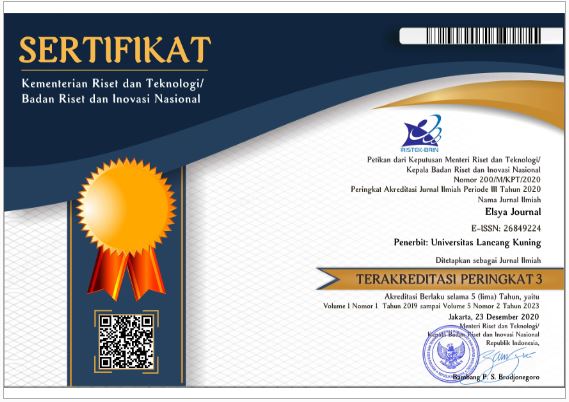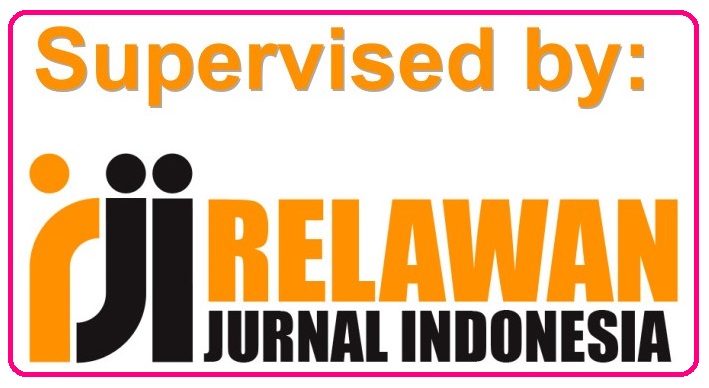Speaking Up: A Comprehensive Investigation of EFL Secondary Students' Speaking Skill Problems in Indonesia's Islamic School Context
Abstract
This study aims to explore the problems encountered by EFL secondary students in learning speaking skills in the context of Islamic schools in Indonesia. The study employed a descriptive qualitative method and used observation, interview, and questionnaire as data collection instruments. The findings revealed that the problems encountered by students in speaking skills can be categorized into four groups: language problems, mental problems, personal problems, and education problems. Language problems included mother tongue interference, poor pronunciation, poor grammar, unnatural spoken English, slow speech, and limited vocabulary. Mental problems included nervousness, shame, low confidence, and lack of ideas. Personal problems consisted of attitude, laziness, environmental effects, and cultural gaps. Finally, education problems included the technique and method of teaching, facilities in teaching-learning, and limited use of media. The results of the study underscore the importance of speaking instruction for EFL learners and the need for teachers and researchers to consider language learners' speaking needs in the context of teaching and learning English. This study contributes to the ongoing discussion on EFL speaking instruction and provides implications for teachers and researchers in designing effective language teaching programs.
Downloads
References
Ahmed, S., & Alamin, A. (2014). Assessing Speaking Ability in Academic Context for Fourth Year Taif University Students. International Journal of English Linguistics, 4(6), 97–103. https://doi.org/10.5539/ijel.v4n6p97
Akbari, O., & Sahibzada, J. (2020). Students’ self-confidence and its impacts on their learning process. American International Journal of Social Science Research, 5(1), 1-15. https://doi.org/10.46281/aijssr.v5i1.462
Alfian, A., Yusuf, M., & Nafiah, U. (2021). Integrating Islamic Values in Teaching English: Lessons Learned from an Integrated Islamic School. Elsya: Journal of English Language Studies, 4(1), 1-11. https://doi.org/10.31849/elsya.v4i1.7322
Amgott, N. (2023). “The challenge was fun”: Critical literacy and growth mindset in L2 multiliteracies. System, 113, 103000. https://doi-org.ezp.lib.cam.ac.uk/10.1016/j.system.2023.103000
Anwas, O. M., Steviano, I., & Warsihna, J. (2018). The Use of Internet Content with Interest in Learning English on High Schools Students. The Turkish Online Journal of Educational Technology, 2, 832-836.
Arifin, S., & Pertiwi, L. (2020). The Influence of Self-Esteem in Speaking Skill at the Second Grade Students of MAN 2 Madiun. English Teaching Journal: A Journal of English Literature, Language and Education, 5(2), 43-49. http://doi.org/10.25273/etj.v5i2.5444
Aulia, V. (2018). Identifying the Problem of Banjarese Speaking Students in Learning English Pronunciation. Journal of English Language Studies, 3(1), 1. https://doi.org/10.30870/jels.v3i1.2582
Barrett, N. E., & Liu, G. Z. (2016). Global trends and research aims for English academic oral presentations: Changes, challenges, and opportunities for learning technology. Review of Educational Research, 86(4), 1227-1271. https://doi-org.ezp.lib.cam.ac.uk/10.3102/0034654316628296
Brown, H. D., & Abeywickrama, P. (2004). Language assessment. Principles and Classroom Practices. White Plains, NY: Pearson Education.
Chao, C. C. (2022). Being a YouTuber that language learners recognize: A study on constructing language teacher identities in social media community of practice. System, 109, 102860. https://doi-org.ezp.lib.cam.ac.uk/10.1016/j.system.2022.102860
Chepkonga, M. C. (2021). Provision of Quality Education in Public Early Childhood Education Centres in West Pokot County, Kenya. East African Journal of Education Studies, 4(1), 7-17. https://doi.org/10.37284/eajes.4.1.432
Derakhshan, A., & Shirejini, R. K. (2020). An investigation of the Iranian EFL learners’ perceptions towards the most common writing problems. Sage Open, 10(2), 2158244020919523. https://doi-org.ezp.lib.cam.ac.uk/10.1177/2158244020919523
Dewi, N. P. P., Marsakawati, N. P. E., Putra, I. N. A. J., & Suwastini, N. K. A. (2022). Being Real on Instagram Reels: An Authentic Tool to Enhance English Speaking Skills. Elsya: Journal of English Language Studies, 4(3), 240–251. https://doi.org/10.31849/elsya.v4i3.10075
Fossey, E., Harvey, C., McDermott, F., & Davidson, L. (2002). Understanding and Evaluating Qualitative Research. Australian & New Zealand journal of psychiatry, 36(6), 717-732.https://doi.org/10.1046/j.1440-1614.2002.01100.x
Frieson, B. L., Murillo, L. A., Presiado, V. E., & Sosnowski, J. (2023). Rethinking multiliteracies: toward a radical vision for multilingualism. https://doi-org.ezp.lib.cam.ac.uk/10.1016/B978-0-12-818630-5.07123-2
Gilakjani, A., Ahmadi, S., & Ahmadi, M. (2011). Why is Pronunciation So Difficult to Learn? English Language Teaching, 4(3), 74–83. https://doi.org/10.5539/elt.v4n3p74
Guo, N. S., & Feng, D. (2015). Infusing multiliteracies into English language curriculum: The visual construction of knowledge in English textbooks from an ontogenetic perspective. Linguistics and Education, 31, 115-129. https://doi-org.ezp.lib.cam.ac.uk/10.1016/j.linged.2015.07.001
Hamuddin, B., Rahman, F., Pammu, A., Sanusi Baso, Y., & Derin, T. (2020). Cyberbullying Among EFL Students’ Blogging Activities: Motives and Proposed Solutions. Teaching English with Technology, 20(2), 3-20.
Hanjani, A. M. (2021). Insights into the cognitive processes of trained vs untrained EFL peer reviewers on writing: An exploratory study. Assessing Writing, 49, 100530. https://doi-org.ezp.lib.cam.ac.uk/10.1016/j.asw.2021.100530
Hawa, S., Suryani, S., Susiani, R., Dauyah, E., & Majid, A. H. (2021). University students’ perception toward the use of the mother tongue in the EFL classrooms. Studies in English Language and Education, 8(3), 1094-1110. https://doi.org/10.24815/siele.v8i3.19870
Heriansyah, H. (2012). Speaking Problems Faced by the English Department Students of Syiah Kuala University. Lingua Didaktika, 6(1), 37–44. https://doi.org/https://doi.org/10.24036/ld.v6i1.7398
Hidayati, T. (2016). English Language Teaching in Islamic Education in Indonesia: Challenges and Opportunities. Englisia Journal, 3(2), 65–82. https://doi.org/10.22373/ej.v3i2.751
Himmah, N. (2018). Speaking problems faced by EFL learners in individual presentation. (Doctoral dissertation, State Islamic University). https://eprints.walisongo.ac.id/id/eprint/9298/1/1403046005.pdf
Kabilan, M., Ganapathy, M., Bray, E., Gustine, G., & Qasim, M. (2019). Facebooking” across Asia–Learning English along the way. Pertanika Journal of Social Science and Humanities, 27(1), 35-49.
Leong, L., & Ahmadi, S. M. (2017). An Analysis of Factors Influencing Learners English Speaking Skill. International Journal of Research in English Education, 6(3), 34–41. https://doi.org/10.18869/acadpub.ijree.2.1.34
Luo, R., & Ye, Z. (2021). What makes a good-quality language MOOC? An empirical study of criteria to evaluate the quality of online language courses from learners’ perspectives. ReCALL, 33(2), 177-192. https://doi.org/10.1017/S0958344021000082
Madkur, A., & Albantani, A. (2018). Instilling Islamic Values in Foreign Language Teaching: An Indonesian Context. In International Conference on Education in Muslim Society (ICEMS 2017) (pp. 97-103). Atlantis Press.
Madsen, H. S. (1980). Selecting Appropriate Elicitation Techniques for Oral Proficiency Tests. Directions in language testing, 87-99.
Maji, E., Samanhudi, U., & Mokoagouw, M. E. (2022). Students’ Difficulties in Speaking (A Case Study in SMKN 3 Sorong). SOSCIED, 5(1). https://doi.org/https://doi.org/10.32531/jsoscied.v5i1.416
Naghdipour, B. (2022). ICT-enabled informal learning in EFL writing. Journal of Second Language Writing, 56, 100893. https://doi-org.ezp.lib.cam.ac.uk/10.1016/j.jslw.2022.100893
Paneerselvam, A., & Mohamad, M. (2019). Learners’ Challenges and English Educators’ Approaches in Teaching Speaking Skills in an ESL Classroom: a Literature Review. Creative Education, 10(13), 3299-3305. https://doi.org/10.4236/ce.2019.1013253
Pennycook, A., & Makoni, S. (2005). The Modern Mission: The Language Effects of Christianity. Journal of Language, Identity, and Education, 4(2), 137–155. https://doi.org/10.1207/s15327701jlie0402
Purwati, D. (2020). Factors Supporting and Hindering the Learning of English as an Additional Language Experienced by a Female Indonesian Student. Jurnal Sains Sosio Huaniora, 4(1), 94–101. https://doi.org/https://doi.org/10.22437/jssh.v4i1.9773
Purwati, D., Ubaidillah, M. F., & Restall, G. C. (2023). “Sorry, I Can’ t Speak”: English Teachers’ Challenges of Teaching EFL Speaking in an Indonesian Vocational High School Sector. MEXTESOL Journal, 47(1), 0–2.
Putri, S. A., Amri, S., & Ahmad, A. (2020). The Students’ Difficulties Factors in Speaking. J-Shelves of Indragiri (JSI), 1(2), 115–129. https://doi.org/10.32520/jsi.v1i2.1059
Radovan, M., & Makovec, D. (2015). Relations between Students’ Motivation, and Perceptions of the Learning Environment. Center for Educational Policy Studies Journal, 5(2), 115-138.
Rahmawati, Y., & Ertin, E. (2014). Developing Assessment for Speaking. IJEE (Indonesian Journal of English Education), 1(2), 199–210. https://doi.org/10.15408/ijee.v1i2.1345
Rajendram, S., & Shi, W. (2022). Supporting international graduate students’ academic language and literacies development through online and hybrid communities of practice. Journal of English for Academic Purposes, 60, 101178. https://doi-org.ezp.lib.cam.ac.uk/10.1016/j.jeap.2022.101178
Rerung, M. K. S. T. (2021). The Influence Of Social Media In Learning English For Hospitality And Tourism Students. Journal FAME: Journal Food and Beverage, Product and Services, Accomodation Industry, Entertainment Services, 4(1), 1-8. http://dx.doi.org/10.30813/fame.v4i1.2798
Sabina, Z. (2018). the Importance of Teaching Listening and Speaking Skills. World Science, 7, 52–55. https://doi.org/10.31435/rsglobal_ws/12062018/5881
Saed, H. A., Haider, A. S., Al-Salman, S., & Hussein, R. F. (2021). The use of YouTube in developing the speaking skills of Jordanian EFL university students. Heliyon, 7(7). https://doi-org.ezp.lib.cam.ac.uk/10.1016/j.heliyon.2021.e07543
Saneka, N. E., & de Witt, M. (2019). Barriers and bridges between mother tongue and English as a second language in young children. South African Journal of Childhood Education, 9(1), 1-8. http://dx.doi.org/10.4102/sajce.v9i1.516
Saville-Troike, M., & Barto, K. (2017). Introducing Second Language Acquisition. Cambridge University Press.
Sheldon, E., Simmonds-Buckley, M., Bone, C., Mascarenhas, T., Chan, N., Wincott, M., ... & Barkham, M. (2021). Prevalence and risk factors for mental health problems in university undergraduate students: A systematic review with meta-analysis. Journal of Affective Disorders, 287, 282-292. https://doi-org.ezp.lib.cam.ac.uk/10.1016/j.jad.2021.03.054
Siregar, Iskandar, and D. (2022). Teaching Indonesian Speaking Skills with Gamification Approach. EEJ: English Education Jurnal, 3(13), 361–372. https://doi.org/https://doi.org/10.24815/eej.v13i3.26190
Stein-Smith, K. (2019). Rethinking the role of languages in the US: Toward a more diverse cultural identity. Journal of Language Teaching and Research, 10(3), 403-411. http://dx.doi.org/10.17507/jltr.1003.01
Subasini, M., & Kokilavani, B. (2013). Significance of grammar in technical English. International Journal of English Literature and Culture, 1(3), 56-58.
Syafryadin, S. (2020). The Effect of Talking Chips Technique Toward the Improvement of Students’ Speaking Achievement at one of the Senior High Schools in Bandung. Linguists: Journal of Linguistics and Language Teaching, 6(2), 1-13. https://doi.org/10.29300/ling.v6i2.2776
Trigueros, R., Aguilar-Parra, J. M., Cangas, A. J., Bermejo, R., Ferrandiz, C., & López-Liria, R. (2019). Influence of emotional intelligence, motivation and resilience on academic performance and the adoption of healthy lifestyle habits among adolescents. International journal of environmental research and public health, 16(16), 2810. https://doi.org/10.3390/ijerph16162810
Wahyuningsih, S., & Afandi, M. (2020). Investigating English Speaking Problems: Implications for Speaking Curriculum Development in Indonesia. European Journal of Educational Research, 9(3), 967-977.
Zakaria, N., Hashim, H., & Yunus, M. M. (2019). A Review of Affective Strategy and Social Strategy in Developing Students’ Speaking Skills. Creative Education, 10(12), 3082–3090. https://doi.org/10.4236/ce.2019.1012232
- Author retains the copyright and grants Elsya Journal the right of first publication of the work simultaneously licensed under the Creative Commons Attribution-ShareAlike 4.0 License that allows others to share the work with an acknowledgment of the work's authorship and initial publication in this journal
- The author is able to enter into separate, additional contractual arrangements for the non-exclusive distribution of the journal's published version of the work (e.g., post it to an institutional repository or publish it in a book) with the acknowledgment of its initial publication in this journal.
- The author is permitted and encouraged to post his/her work online (e.g., in institutional repositories or on their website) prior to and during the submission process, as it can lead to productive exchanges, as well as earlier and greater citation of the published work (See The Effect of Open Access).









 Elsya Journal is licensed under
Elsya Journal is licensed under 